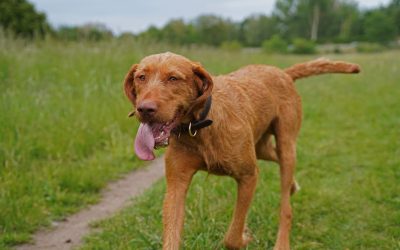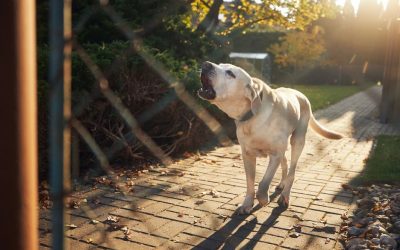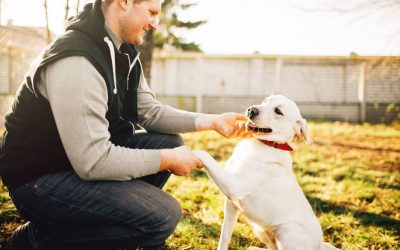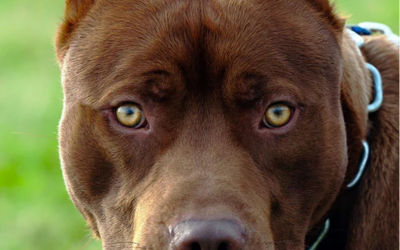How to Greet a Dog The Right (And Wrong) Way

Picture this: you spot a new canine friend! Before you get all excited and rush over, paws for a second. Approaching any unfamiliar dog calls for some serious manners.
As with meeting human beings, there are right and wrong ways to make first impressions that can majorly impact how your new friend views you. From too much direct eye contact to overly friendly petting, so many blunders ruin building relationships.
In this blog, we walk you through some handy tips on greeting politely so you’ll be making tail-wagging buddies in no time. It’s all about respecting boundaries as you befriend the four-legged locals.
The Wrong Way to Greet a Dog
Well hi there, new canine friend! Let me just stare you down, tower over you, and get all up in your business by petting your head without permission. What’s that? You’re growling? Barking? Showing whale eye? Yikes, sorry about that! I was just trying to say hello in the rudest way ever.
Lemme try this again. Who’s a good boy?! Wait, I don’t even know your name yet and here I am, presuming we’re BFFs already. Please pardon my clumsy human manners! When I enthusiastically call your name without an introduction first, it probably makes you feel awkward.
Should I let my tiny humans run and shout at you? My kids get so amped up seeing a furry new playmate, but can their quick movements activate your prey drive?
As you can probably tell from the above, there are various ways to jeopardize an introduction to a new dog. Let’s break each down in a bit more detail.
- The Aggressive Approach
Barreling straight toward an unfamiliar dog while making direct eye contact and leaning over them is one of the worst things you can do. This aggressive, domineering posture and approach can seem threatening. Staring down a dog directly can feel like a challenge, triggering fear or defensive reactions like barking, growling or even nipping.
- The Overeager Approach
Reaching your hand out over a dog’s head to pet or grab at them is equally problematic. It can make them feel cornered and dominated. This direct contact breaches polite canine etiquette around respecting personal space with strangers.
Enthusiastically calling a dog’s name despite not having met them or allowing them to pick up and process your scent first is also incorrect. While your intent is friendly, this presumptuous familiarity can feel stressful or even frightening without that introductory ritual.
- The Child’s Approach
Letting small children run straight up to or hug dogs is also very risky, as kids’ quick movements and high voices can activate a dog’s prey drive. As a general rule, children under ten should not interact with a strange dog without adult supervision and guidance.

The Right Way to Greet a Dog
Now that we’ve covered all the incorrect ways humans bumble through first greetings, let’s talk about how to properly meet a new four-legged friend.
Take It Slow
When meeting a new dog, the proper way to greet them must show respect while allowing them to warm up to you. Move slowly and indirectly rather than rushing straight for them. This gives them time to observe you, pick up your scent, and approach you if they want.
Hold out a gently closed hand low and stationary for the dog to investigate your scent. Let them come to you rather than moving towards them. When they do, you can say a soft greeting in a calm tone and praise them. But don’t immediately pet them or reach for their head unless they solicit it, which brings consent into the equation.
What’s the Deal With Eye Contact?
Avoid prolonged direct eye contact, which can communicate aggression. Briefly glance at the dog, then look to the side. Crouch down to their level rather than towering over them, but turn your body sideways. This communicates peaceful intentions through a non-threatening posture.
Prioritize Body Language
Pay attention to canine body language. Signs of friendliness like a loose wagging tail, soft relaxed eyes and mouth, and play bows show they welcome contact. But if the dog cowers, growls, snarls, hides behind their human, or freezes in place – respect their signals to keep distance. Fear responses like these mean slow down or pause any interactions.
When In Doubt, Bring Some Treats
If the dog remains wary but not overtly uncomfortable, try tossing treats gently on the ground for them from afar. Let them choose to approach and eat without pressure. This can help them overcome fear and develop more positive associations. Just avoid overly distracting noisy crinkly treat bags that may startle them.
As the dog relaxes into your presence, offer the back of your hand for them to sniff again. Once they seem fully at ease, ask the human permission and then gently stroke under the chin rather than patting heavily from above. Gradually work up to petting along their back and sides if welcomed.
Pay Attention to Consent
A major rule when meeting dogs is to respect consent and let them indicate their comfort level. Persistently pursuing interaction with a dog who is not receptive can backfire dangerously. Honor their boundaries and cues.
If a dog remains uncertain but isn’t hiding or acting volatile, have their human offer them a favorite treat for reassurance paired with praise. This connects you with positive feelings over time at their pace. But again, don’t directly approach, touch or crowd them.
Meeting Puppies
Though irresistibly cute, rambunctious puppies still require care when greeting them to prevent bites or behavior issues long-term. Get down to their level, move slowly and let them sniff you at a distance without petting them immediately. Puppies have sharp teeth during teething periods, so even playful mouthing can injure skin.
If a puppy tries jumping or nipping in excitement, stand up and step away to discourage this reaction. Reward them with affection once all four paws are on the floor. This reinforces polite conduct when engaging humans. Have treats ready to redirect biting toward appropriate chew toys as well.
Start Socialization Young
Exposing puppies to new people using positive greetings early helps prevent fear, distrust or aggression issues later on. But take introductions gradually, especially for rescues or abuse victims who may be more traumatized or defensive. Their past experiences can complicate interactions.
Let shy or mistreated adult dogs initiate contact so they rebuild confidence and feel in control. Move slowly, speak softly and limit petting unless they request it. Positive reinforcement training can also help overcome traumatic associations.
Key Takeaways on Greeting Dogs Properly
- Avoid direct eye contact, loud voices or quick movements
- Crouch sideways and offer a closed hand to sniff
- Let the dog approach you first
- Look for friendly body language as consent
- Toss treats nearby for wary but calm dogs
- Pet under chin before head, back or sides
- Respect signals to disengage
- Seek permission from owner too
- Discourage puppy jumping/nipping
- Socialize young dogs carefully
- Use rewards to build confidence in mistreated dogs
Following these guidelines on how to properly greet dogs starts relationships off right. Paying attention to canine consent and manners makes befriending even unfamiliar dogs safer and more rewarding for everyone. With compassion and patience, you’ll meet wonderful four-legged companions.
Visit the Good Life Inc. blog for more essential tips and tricks today.
Sources:






